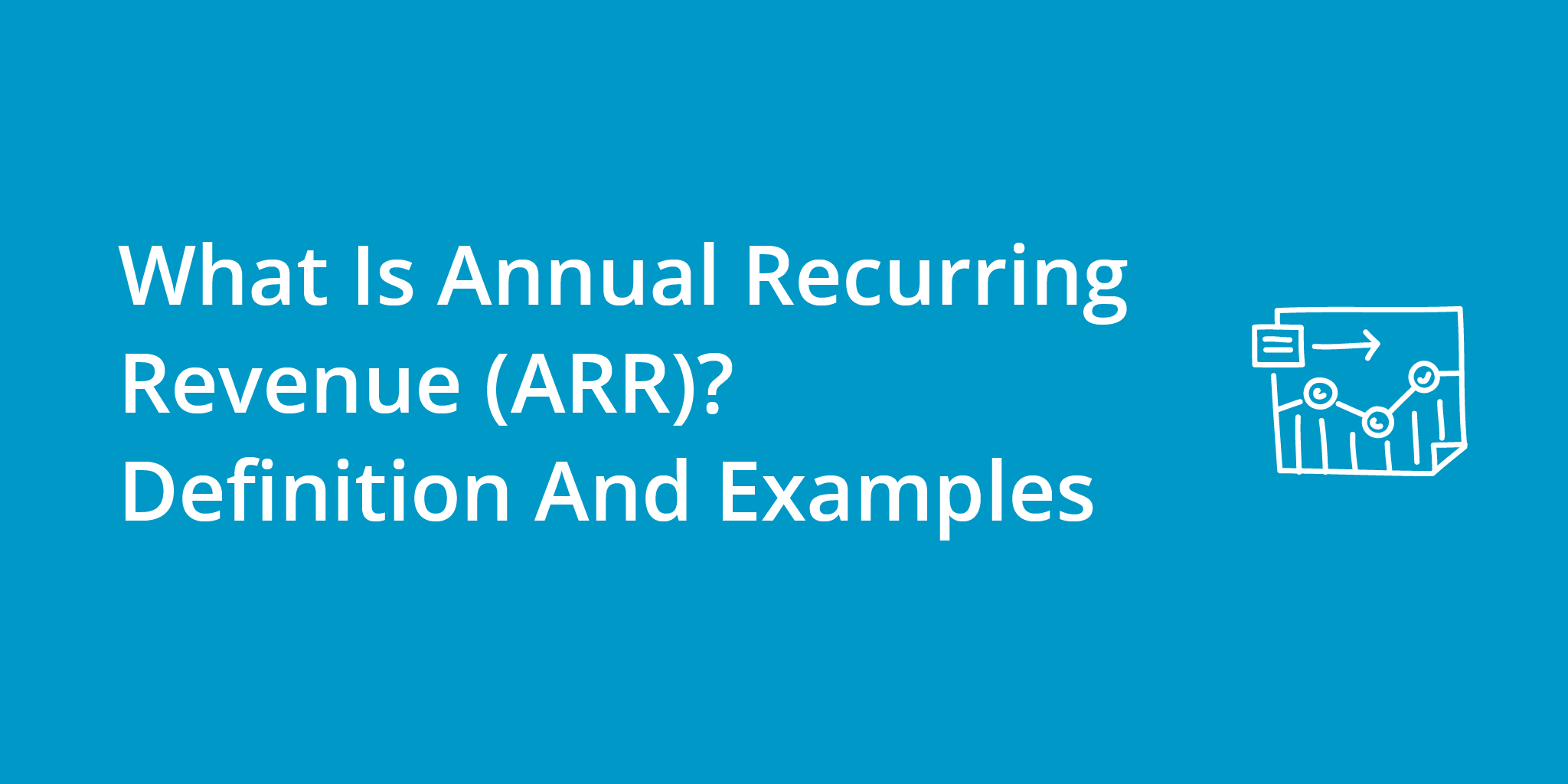What is ARR and Why It Matters
ARR stands for Annual Recurring Revenue, the yearly run‐rate of subscription revenue a company earns (scalexp.com). For example, if you have $10,000 in monthly recurring subscription revenue (MRR), your ARR would be $120,000 (12 x $10,000). ARR is a vital health indicator for any recurring revenue business because it normalizes subscription revenue on an annual basis. Key reasons why ARR matters:
- Investor Valuations: Investors and analysts often use ARR to value companies. High ARR—and high ARR growth—can lead to higher valuation multiples in funding rounds or acquisitions (scalexp.com, scalexp.com). Public market valuations for SaaS companies are frequently quoted as a multiple of ARR.
- Revenue Predictability: ARR captures the stable, contracted revenue you can expect over a year, excluding one‐time sales. This helps in planning budgets and allocating resources with more certainty.
- Goal Setting and Benchmarking: Companies use ARR to set growth targets (e.g., aiming to reach $1M ARR) and to benchmark against industry peers. It serves as a North Star metric for long‐term growth in subscription models.
Key Insight: ARR normalizes revenue on an annual basis, making it essential for long-term strategic planning and investor confidence.
Industry Benchmarks for ARR
Understanding industry benchmarks helps you gauge how your ARR and growth rates stack up against peers:
- ARR Growth Rates: According to a study of 439 SaaS companies, the median ARR growth rate ranged between 40% and 60% annually (maxio.com). Growth varies by stage—early‐stage startups with low ARR tend to grow faster percentage‐wise, while growth naturally slows as companies scale. For SaaS companies with $1–5M in ARR, median year‐over‐year growth is about 52–59%, while for those with $5–15M ARR it is around 46–55% (metrichq.org). Top‐performing firms often achieve 100%+ annual ARR growth (metrichq.org), and later‐stage companies typically need to sustain over 100% ARR growth to rank among the top 25% globally (maxio.com). (In other words, the fastest growers are more than doubling their ARR annually.)
- Recurring Revenue Multiples: Valuation multiples based on ARR have seen dramatic shifts. During the 2021 market peak, fast‐growing public SaaS companies traded at over 46× ARR, which later dropped to around 11× ARR by late 2022 (openviewpartners.com). As of 2023, multiples around 10× ARR are more common, though these can fluctuate with market conditions. Private companies may see different multiples based on their growth and margins.
- ARR per Employee: An emerging metric is ARR per full‐time employee (FTE)—the amount of ARR generated per team member. Recent data shows that public SaaS companies have a median of approximately ~$283,000 ARR per employee, with top‐quartile performers at over $369,000 ARR per employee (growthunhinged.com and growthunhinged.com). For context, mature leaders like Adobe, Dropbox, and Twilio each generate well over $600K in ARR per employee. As a rule of thumb, what’s considered “good” versus “great” ARR per employee varies by company scale (e.g., ~$150K is “good” for a startup in the $1–5M ARR range, whereas $250K+ is “great” as you approach $10M ARR) (growthunhinged.com).
- Subscription Industry Growth: The broader subscription economy continues to grow robustly. Subscription‐based businesses (including SaaS) have historically outpaced the overall market—one index found a ~17% CAGR for subscription companies over the past decade versus ~4–5% for the S&P 500 (zuora.com). Even as growth normalized after the 2021 surge, subscription revenues in 2023 still grew around 10% year‐over‐year on average (s201.q4cdn.com). These benchmarks underscore that recurring revenue models are thriving.
ARR Trends in the SaaS Industry
Keeping an eye on ARR trends can reveal how market forces and business strategies are evolving in the subscription world:
- Post-Peak Growth Adjustments: After the explosive growth many SaaS firms experienced in 2020–2021, growth has become harder in 2023. Customers have tightened budgets and extended deal cycles, making new ARR gains more challenging (openviewpartners.com). The “growth at all costs” era has cooled, with companies shifting toward more efficient growth. A silver lining is that SaaS businesses remained resilient—mission-critical software still retained customers, aided by cash buffers from earlier fundraising (openviewpartners.com).
- Focus on Efficiency: In 2023, a major trend has been a drive for productivity and efficiency. As noted, ARR per employee jumped significantly year-on-year (growthunhinged.com). SaaS companies are optimizing operations, embracing product-led growth (PLG), and expanding within their customer base to grow ARR without proportional increases in spend (openviewpartners.com). The key takeaway is that the industry’s “North Star” metric is shifting from sheer growth to efficient growth—achieving high ARR with lean teams and controlled costs.
- ARR “Rule of 40” and Health Metrics: Investors often use the Rule of 40—where a company’s ARR growth rate plus its profit margin should equal or exceed 40%—as a litmus test. For example, a SaaS company growing ARR at 30% should ideally have at least a 10% profit margin. This rule is a common framework in today’s sustainability-focused climate.
- Market Valuations & ARR: Valuation sentiment has shifted. The era of sky-high ARR multiples corrected in 2022, and 2023 saw some stabilization. Emerging areas like AI have generated optimism—companies positioning as “AI-driven” saw valuation bumps, but only those effectively monetizing AI translated that into real ARR growth (openviewpartners.com). Overall, investors are rewarding businesses that can demonstrate strong net ARR retention and capital-efficient acquisition.
- New Vertical ARR Streams: Another trend is the expansion of the ARR model beyond traditional software. Many industries—from media streaming to IoT and manufacturing (equipment-as-a-service)—are adopting subscription models. This blurs traditional industry lines but highlights that recurring revenue is becoming the norm.
- Retention and Net ARR Expansion: Smart companies are doubling down on net ARR retention—ensuring that ARR from existing customers grows over time via renewals and upsells. For example, Snowflake achieved a 168% net revenue retention in a recent year (forentrepreneurs.com). High net retention directly boosts ARR without needing new customer acquisitions.
Case Studies: Successful ARR Growth Strategies
Real‐world examples illustrate how companies drive ARR growth and leverage subscription strategies:
- Slack – Product-Led Growth & Viral Adoption: Slack has been a poster child for rapid ARR expansion through product-led growth. Launched in 2014, its workplace messaging tool spread virally using a freemium model that led teams to quickly convert to paid plans. Slack’s strategy of easy adoption, team collaboration hooks, and bottom-up sales led to explosive growth—it went from $0 to a $7.1 billion valuation in under 5 years (singlegrain.com). By August 2018, Slack had millions of users (including 3M+ paid users) and one of the highest freemium conversion rates at around 30%, translating into ARR that reached the $100M+ milestone within a couple of years.
Key takeaway: A frictionless product that users love can drive unprecedented ARR growth with relatively low customer acquisition cost.
- Zoom – Capitalizing on Market Opportunity: Zoom exemplified how external circumstances and a scalable model can catapult ARR. During the 2020 pandemic, demand for video conferencing exploded. Its easy-to-use platform and generous free tier led to massive adoption across businesses, schools, and families. The result was astronomical revenue growth—Zoom’s revenue in Q2 2020 grew 355% year-over-year (statista.com, saastr.com). By the end of 2020, Zoom had soared past $2.6B in annual revenue (approaching a run-rate of ~$4B ARR).
Key takeaway: If your product fits a critical need, be ready to scale and convert a windfall of users into recurring revenue.
- Adobe – Transition to Subscription Model: Adobe’s story shows how shifting from one-time sales to recurring subscriptions can massively boost ARR and company valuation. In 2012–2013, Adobe shifted its Creative Suite from perpetual licenses to Creative Cloud subscriptions. Although initially met with resistance, the pivot paid off: by Q1 2017, Adobe’s Creative Cloud ARR reached $4.25 billion (with $265M in net new ARR added that quarter) (chartmogul.com). Adobe’s recurring revenue grew steadily (e.g., Creative Cloud revenue was up 44% in FY2016) and attracted customers preferring monthly payments over large upfront costs. Today, Adobe reports its Digital Media ARR as a key metric to investors (over $16B ARR) (adobe.com).
Key takeaway: Moving to a subscription model can provide more predictable revenue and higher customer lifetime value.
- Atlassian – Land-and-Expand with High Retention: Atlassian (maker of Jira, Confluence, etc.) achieved strong ARR growth by employing a land-and-expand strategy focused on customer retention. Using low-cost inbound sales and self-service adoption, new teams start small and then expand usage over time. This approach led to high net retention—with existing customers increasing their spending on additional licenses or products. Atlassian’s efficient go-to-market resulted in a billion-dollar ARR business with high gross margins and relatively low CAC.
Key takeaway: Prioritizing customer success and expansion can organically boost ARR without proportional increases in acquisition spending.
These case studies highlight different levers for ARR: Slack shows product virality, Zoom demonstrates market timing and scalability, Adobe illustrates the impact of a subscription model, and Atlassian emphasizes customer expansion and retention. Companies can mix and match these strategies based on their product and market dynamics.
ARR vs MRR, LTV, and CAC – How ARR Interplays with Other Key Metrics
ARR is powerful on its own, but it becomes even more insightful when viewed alongside other key SaaS metrics. Here we compare Annual Recurring Revenue (ARR) with Monthly Recurring Revenue (MRR), Customer Lifetime Value (LTV), and Customer Acquisition Cost (CAC) to explain how to use these metrics together for forecasting and growth.
ARR vs MRR (Annual vs Monthly Recurring Revenue)
Monthly Recurring Revenue (MRR) is simply the monthly version of ARR. In fact, the only difference is the time scale—ARR is annualized, whereas MRR measures recurring revenue in a given month (betterproposals.io). Typically, MRR × 12 equals ARR (assuming no seasonality or cancellations). For example, an MRR of $50,000 equates to an ARR of $600,000.
When to use which? Early-stage startups and businesses with shorter sales cycles often focus on MRR to track month-to-month momentum. ARR is favored for a big-picture view—commonly used by B2B SaaS with annual contracts or companies reporting to investors (maxio.com, maxio.com). In practice, both metrics are tracked together since consistent MRR growth translates to ARR growth. ARR smooths out monthly fluctuations, while MRR reveals seasonal or short-term changes.
- ARR provides a long-term perspective of recurring revenue (great for strategic planning and showing scale).
- MRR provides a short-term pulse on recurring revenue (useful for detecting trends or issues quickly).
Using both: Businesses should use MRR for detailed revenue analytics and ARR for high-level planning.
ARR and LTV (Lifetime Value)
While ARR/MRR measure revenue over a period, Customer Lifetime Value (LTV) measures the total revenue a single customer is expected to generate over their lifetime with your product (betterproposals.io). In other words, LTV is cumulative for one customer, whereas ARR aggregates the current year’s run-rate for all customers.
How they differ: ARR is a snapshot of recurring revenue projected over a year (subject to churn and new sales), while LTV depends on how long a customer stays and how much they pay. For example, if an average customer pays $100 per month for 3 years, their LTV is $3,600, while 100 stable customers at $100 per month yield an ARR of $120,000.
Using LTV with ARR: These metrics together help assess revenue quality. A growing ARR is ideal, but high LTV shows that customers stick around and continue paying—bolstering ARR over time. If ARR is growing but LTV is low, it may signal high churn. For a healthy SaaS business, both ARR and LTV should be robust.
Forecasting & strategy: LTV feeds into ARR projections by accounting for churn. Companies often segment LTV by customer cohort (e.g., enterprise vs. SMB) to focus sales efforts effectively.
ARR and CAC (Customer Acquisition Cost)
Customer Acquisition Cost (CAC) is the cost of acquiring a new customer—including marketing and sales expenses divided by the number of new customers acquired (betterproposals.io). CAC indicates how much investment is needed to generate each new chunk of ARR.
Relation to ARR: Consider CAC in relation to the ARR (or MRR) a customer provides. For example, if the average CAC is $1,000 and the customer’s subscription yields $500 per year, it takes two years to break even on acquisition costs. Many SaaS CFOs track the CAC payback period—aiming for a payback within 12 to 18 months (forentrepreneurs.com). A shorter payback period indicates efficient growth.
Another key measure is the LTV:CAC ratio, which asks: for every $1 spent on acquiring a customer, how many dollars of revenue will that customer generate over their lifetime? Industry wisdom often targets an LTV:CAC ratio of about 3:1 (blog.hubspot.com). A 3:1 ratio suggests that the ARR from a customer comfortably exceeds the acquisition cost; a lower ratio may indicate overspending relative to revenue generated.
Using CAC with ARR: Businesses should monitor how much ARR (or MRR) is added per dollar of sales and marketing spend (sometimes called the Magic Number or Sales Efficiency) (forentrepreneurs.com). For instance, if $1M is spent on sales in a quarter and $500K in ARR is added, that’s a 0.5:1 ratio (implying a 24-month CAC payback). If $1M in ARR is added for $1M spent, that’s a 1:1 ratio (12-month payback). This analysis ensures that ARR growth comes at a reasonable cost.
Combining ARR, MRR, LTV, and CAC for Forecasting & Growth
Individually, these metrics each tell part of the story. Together, they provide a complete view for strategic planning:
- Financial Forecasting: Begin with your current ARR, then project new ARR from new customers (based on planned CAC spend and expected payback), add ARR expansion from existing customers (from upsells or net retention), and subtract ARR churn (derived from customer lifetime or churn rate). For example, if you plan to invest $500K in sales next year with a CAC of $10K per customer, you might expect roughly 50 new customers. If each customer’s subscription is $5K/year, that adds $250K in new ARR—plus adjustments for upsells and churn. This exercise uses ARR, CAC, and LTV/churn in concert.
- Growth Strategy and Resource Allocation: High-level metrics guide overall strategy. If your LTV:CAC ratio is low, it might indicate a need to improve product-market fit or customer retention before scaling new sales. Conversely, a high LTV:CAC ratio with a short CAC payback may signal that increased investment in customer acquisition can further boost ARR growth. SaaS leaders set target metrics (e.g., “LTV:CAC ≥ 3”, “CAC payback < 15 months”, “net ARR retention > 100%”) and use ARR as the primary output metric while tuning the business based on LTV and CAC.
- Holistic Health Check: Think of ARR as the size of your recurring revenue engine, MRR as the speedometer (tracking monthly momentum), LTV as fuel efficiency (how valuable each customer is), and CAC as the cost of fuel (the expense to acquire each customer). Optimizing all these metrics ensures long-term sustainable growth rather than short-term spurts.
Metrics Summary
| Metric | Description | Time Frame | Usage |
|---|---|---|---|
| ARR | Annual Recurring Revenue, the run-rate of subscription revenue over a year | Annual | Provides long-term perspective and smooths monthly fluctuations |
| MRR | Monthly Recurring Revenue, the recurring revenue in a given month | Monthly | Tracks short-term trends and seasonality |
| LTV | Lifetime Value, the total revenue expected from a customer over their lifetime | Cumulative | Assesses customer value and retention |
| CAC | Customer Acquisition Cost, the cost incurred to acquire a new customer | Per acquisition | Measures sales and marketing efficiency |
Key Takeaways
In crafting an ARR-focused growth strategy, it’s clear that Annual Recurring Revenue is intertwined with broader SaaS growth strategies and subscription business metrics. To recap the key points:
- Annual Recurring Revenue (ARR) is the annualized revenue from subscriptions—a crucial metric for gauging recurring revenue health and business scale (scalexp.com).
- Industry Benchmarks: High-growth SaaS startups often aim for aggressive ARR increases (e.g., the “T2D3” pattern), with median ARR growth around 50% yearly and top performers exceeding 100% (staxbill.com, metrichq.org). Public companies currently trade around 10× ARR multiples on average (openviewpartners.com).
- ARR Trends: SaaS ARR growth trends show a shift toward efficient growth—with more ARR per employee and balanced “Rule of 40” management. The subscription economy continues to expand rapidly (zuora.com).
- Case Studies: Companies like Slack, Zoom, Adobe, and Atlassian illustrate varied strategies to increase ARR—from product virality to business model transformation and strong customer retention.
- ARR vs MRR, LTV, CAC: ARR provides an annual view while MRR tracks monthly momentum. LTV and CAC add depth; healthy ratios (e.g., an LTV:CAC of about 3:1) are crucial for profitable growth.
By understanding and optimizing these metrics, businesses can improve financial forecasting and craft smarter subscription strategies.
“Achieving sustainable ARR growth means balancing customer acquisition with retention—driving long-term success in the competitive SaaS landscape.”
Further Reading: For more on SaaS growth metrics, explore the OpenView SaaS Benchmarks Report (openviewpartners.com) and David Skok’s SaaS Metrics 2.0 framework (forentrepreneurs.com). Blogs like SaaStr and ForEntrepreneurs also offer insights on ARR, churn, net revenue retention, and the Rule of 40.



